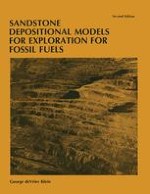The purpose of this monograph is to provide participants in my various short courses with a brief statement of the material I cover in my lectures. In addition, key illustrations are reproduced for guidance. A brief bibliography of reference material is appended to each chapter. The bibliographic material includes those references that I consider critical to my remarks. No claim is made of topical or bibliographic completeness. This monograph also is intended as a brief summary of depositional processes, Holocene sediments, ancient counterparts of depositional environments, and examples of oil- and gas-bearing stratigraphic traps in five depositional environments. This summary is intended to complement lecture and reading courses dealing with sedimentology, depositional systems, sedimentary facies, sedimentary environments, sandstone diagenesis, and sedimentary modelling as a predictive tool for exploration. The student is cautioned, however, that this monograph is merely an introduction and summary overview of the subject. More complete treatments appear in standard textbooks. Sedimentology has changed and advanced over the past twenty-five years, in part because the American oil industry needed to make predictions about the occurrence of the harder-to-find stratigraphic traps. In addition, the development of plate-tectonic theory, and supportive data from the Deep Sea Drilling Project, have caused sedimentology to change from an essentially descriptive science to a mature, predictive science. The 1960s and 1970s in particular witnessed an explosion of new insights and understanding of how sediments are deposited, and how sedimentary rocks are formed.
